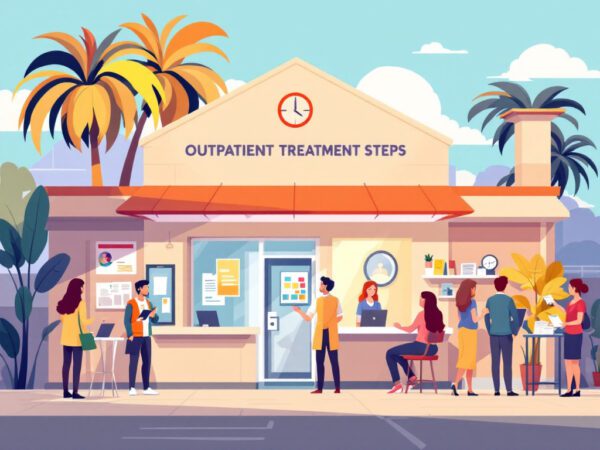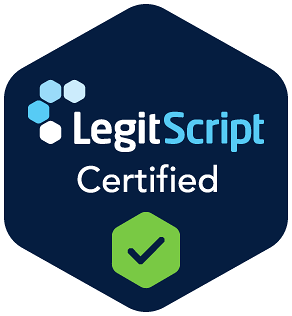Understanding PTSD and its Impact
PTSD in Military Service
Post-Traumatic Stress Disorder (PTSD) is a mental health condition that can occur after experiencing or witnessing traumatic events. In military contexts, service members are often exposed to potentially traumatic experiences during war or conflict, which significantly increases their risk of developing PTSD (VA.gov).
Military personnel, especially those who have been deployed, are at a higher risk for PTSD. Current statistics indicate that 7 out of every 100 Veterans (7%) experience PTSD at some point in their lives, compared to 6 out of every 100 adults in the general population (VA PTSD). Deployment has been shown to triple the likelihood of experiencing PTSD among Veterans when compared to those who did not deploy, all within the same service era.
Prevalence and Risk Factors
The prevalence of PTSD can vary among different groups within the Veteran community. For example, female Veterans have a higher incidence, with approximately 13 out of 100 (13%) experiencing PTSD, while the rate among male Veterans stands at 6 out of 100 (6%) (VA PTSD).
Several risk factors contribute to the likelihood of developing PTSD in military service. These include the intensity of the combat experience, personal history of trauma, lack of social support, and previous mental health issues.
| Risk Factors | Description |
|---|---|
| Combat Exposure | Direct involvement in intense combat situations |
| Personal Trauma History | Previous traumatic experiences prior to military service |
| Lack of Social Support | Limited friends or family support during or after service |
| Pre-existing Mental Health Issues | Prior mental health conditions that can exacerbate PTSD symptoms |
Understanding these factors is crucial for implementing effective therapeutic measures. As research continues to evolve, so does our knowledge of how to address and treat PTSD among Veterans effectively.
For those seeking help, exploring options like cognitive behavioral therapy, dialectical behavior therapy, or specialized trauma group therapy can be beneficial in the healing process. These approaches are tailored to address the unique experiences and challenges faced by Veterans, providing a comprehensive pathway towards recovery.
Effective Treatment Options
When considering treatment for those dealing with trauma, particularly veterans, it’s essential to explore various effective options. These can broadly be categorized into trauma-focused psychotherapies, medication options, and complementary and integrative health approaches.
Trauma-Focused Psychotherapies
Trauma-focused psychotherapies have been identified as some of the most effective treatments for PTSD. The revised Departments of Veterans Affairs and Defense (VA/DoD) Clinical Practice Guideline (2023) highlights three specific therapies:
- Prolonged Exposure (PE) Therapy
- Cognitive Processing Therapy (CPT)
- Eye Movement Desensitization and Reprocessing (EMDR)
These therapies have consistently demonstrated the ability to reduce PTSD symptoms (VA National Center for PTSD). Additionally, Written Exposure Therapy (WET) has shown effectiveness comparable to CPT and PE in alleviating symptoms of PTSD.
| Therapy Type | Description | Effectiveness |
|---|---|---|
| Prolonged Exposure (PE) | Focuses on gradually facing trauma-related memories and situations | High |
| Cognitive Processing Therapy (CPT) | Helps individuals reframe negative thoughts related to trauma | High |
| Eye Movement Desensitization and Reprocessing (EMDR) | Uses guided eye movements to process trauma memories | High |
| Written Exposure Therapy (WET) | Encourages writing about traumatic events to process feelings | Comparable to CPT/PE |
For further insights into individual therapies, you might explore cognitive behavioral therapy, dialectical behavior therapy, and trauma group therapy.
Medication Options and Considerations
Medication can play a supportive role in treating PTSD, especially in conjunction with psychotherapeutic methods. Antidepressants, particularly Selective Serotonin Reuptake Inhibitors (SSRIs), are commonly prescribed to help alleviate symptoms. Consultations with a healthcare provider can determine the most appropriate medications based on individual needs and responses.
Complementary and Integrative Health Approaches
Complementary approaches can enhance traditional PTSD treatments. Mindfulness-Based Stress Reduction (MBSR) has been shown to have beneficial effects on reducing symptoms of PTSD (VA PTSD National Center). Other potentially helpful therapies include:
- Yoga Therapy: Encourages physical and mental relaxation
- Art Therapy: Provides a creative outlet to express feelings
- Nutrition Counseling: Supports mental health through dietary improvements
For an integrated approach to treatment, we recommend collaborating with professionals in nutrition counseling addiction and yoga therapy outpatient.
Exploring these effective treatment options enables individuals and their loved ones to make informed decisions about the best paths to recovery, particularly in the context of veteran trauma therapy.
VA’s Approach to PTSD Treatment
The Department of Veterans Affairs (VA) has developed comprehensive programs to address PTSD among veterans. By utilizing an array of evidence-based therapies and treatment modalities, the VA seeks to provide effective care tailored to the needs of those who have served.
VA PTSD Treatment Programs
The VA offers nearly 200 specialized PTSD treatment programs across the nation, providing diverse options for veterans seeking support (VA Health Care). These programs are designed to assist with various issues including military sexual trauma, substance use problems, depression, and at-risk behaviors related to suicide.
| Treatment Program | Description |
|---|---|
| Cognitive Processing Therapy (CPT) | A structured therapy that focuses on changing unhelpful thoughts related to trauma. |
| Prolonged Exposure Therapy (PE) | Involves gradual exposure to trauma reminders in a safe environment, helping reduce avoidance and fear. |
| Eye Movement Desensitization and Reprocessing (EMDR) | A therapy that aims to alleviate distress linked to traumatic memories by using guided eye movements. |
The revised VA/DoD Clinical Practice Guideline for PTSD (2023) highlights these therapies as the most effective interventions. Completion of 12–16 weekly sessions of these manualized therapies has shown a consistent reduction in PTSD symptoms (PubMed Central).
Evidence-Based Therapies and Modalities
The VA emphasizes evidence-based therapies that are proven to support recovery from PTSD. These therapies include:
- Cognitive Processing Therapy (CPT): A cognitive-behavioral approach that helps veterans understand and reframe distressing thoughts about their trauma.
- Prolonged Exposure Therapy (PE): Focused on facing trauma-related memories and situations to reduce their power and impact.
- Eye Movement Desensitization and Reprocessing (EMDR): This innovative therapy utilizes bilateral stimulation to help process traumatic memories, effectively aiding in desensitization.
Other effective therapies used in VA programs include:
| Therapy Type | Description |
|---|---|
| Narrative Exposure Therapy (NET) | Involves creating a narrative of traumatic events to improve emotional processing. |
| Written Exposure Therapy (WET) | Encourages veterans to write about their trauma experiences, helping to understand and integrate these memories. |
| Cognitive Behavioral Therapy for PTSD (CBT for PTSD) | Focuses on changing negative thought patterns associated with trauma. |
By offering a blend of these therapies, the VA aims to provide comprehensive treatment that addresses the individual needs of veterans. Options also extend to innovative techniques such as yoga therapy outpatient and mindfulness-based therapy, ensuring patients have access to holistic approaches alongside traditional psychotherapy.
This multi-faceted array of therapies underscores the VA’s commitment to supporting veterans through their healing journey, enabling them to reclaim their lives after trauma.
Importance of Seeking Help for PTSD
Benefits of Early Intervention
Seeking help for PTSD is crucial, especially for veterans who may be grappling with the lingering effects of trauma. Whether one has just returned from deployment or has been home for decades, it’s never too late to initiate treatment. Early intervention can significantly reduce symptoms and prevent them from escalating (VA Health Care).
Here are some benefits of early intervention for PTSD:
| Benefit | Description |
|---|---|
| Symptom Management | Early treatment can help manage symptoms effectively, improving daily functioning. |
| Preventing Worsening | Timely intervention can prevent symptoms from escalating, leading to more severe mental health issues. |
| Supportive Resources | Early help connects individuals with supportive resources, including therapy and peer support. |
| Increased Recovery Rate | Individuals are more likely to recover with prompt treatment and support. |
Support Available for Veterans
Veterans have access to a wide range of support options for PTSD. The Department of Veterans Affairs (VA) offers various services tailored to address the unique experiences of veterans, including free private counseling, alcohol and drug assessments, and community resources at over 300 Vet Centers (VA Health Care).
Various health services provided by the VA include:
- Trauma Therapies: Therapy options like cognitive behavioral therapy, dialectical behavior therapy, and mindfulness-based therapy focus on addressing the specific needs of veterans.
- Peer Support Groups: Programs offer veterans a chance to connect with others who have shared experiences. Visit veteran peer support for more information.
- Holistic Approaches: Services such as yoga therapy outpatient and nutrition counseling are available to promote overall well-being.
- Medication Management: Help is available to determine suitable medication options, including SSRIs and SNRIs, which can complement therapy in managing PTSD symptoms.
For veterans facing immediate challenges, the availability of support from professionals and peers can provide an essential lifeline. Remember, addressing PTSD promptly can lead to better recovery outcomes and improved quality of life.
Addressing PTSD in Different Populations
Understanding PTSD Among Women Veterans
Women veterans experience unique challenges in relation to PTSD, predominantly due to a higher prevalence of trauma, such as military sexual trauma (MST). Studies indicate that 13 out of 100 female veterans (13%) have been diagnosed with PTSD, contrasting with 6 out of 100 male veterans (6%). The impact of military sexual trauma is particularly significant, with approximately 1 in 3 women veterans reporting experiences of MST during screenings conducted by their VA providers. This difference in trauma exposure necessitates tailored approaches to treatment and support for women in this demographic.
The psychological consequences of PTSD among female veterans can often be compounded by societal stigma and the perceived barriers to seeking help. It is crucial for treatment programs to consider these unique factors in their therapeutic strategies. Integrative therapies, such as yoga therapy outpatient, have shown promising results in alleviating symptoms while enhancing physical and mental health without significant side effects (PMC).
| PTSD Prevalence by Gender | Female Veterans | Male Veterans |
|---|---|---|
| Diagnosed with PTSD | 13% | 6% |
| Reported Military Sexual Trauma | 1 in 3 | 1 in 50 |
Psychological Support for Those at Risk of Suicide
Veterans are disproportionately affected by suicide. They account for 20% of all U.S. suicides, with approximately 18 to 22 veterans dying by suicide daily. Younger veterans, particularly those aged 18-24, are four times more likely to commit suicide than their non-veteran counterparts (PMC). The transition from active military service to civilian life can significantly heighten the risk of suicidal thoughts and behaviors.
Addressing this urgent issue requires a multifaceted approach that includes not only traditional therapeutic methods such as individual therapy and group therapy mental health but also innovative techniques and peer support systems. Programs that incorporate peer support groups offer veterans a unique chance to connect with others who share similar experiences.
Integrative therapies, such as mindfulness based therapy and expressive therapy, play a critical role in supporting veterans at risk. These methods can help individuals process their emotions and experiences effectively, fostering resilience and community. We must prioritize mental health resources specifically designed for this vulnerable population to mitigate the high rates of suicide and improve overall well-being.
Looking Ahead: Advances in PTSD Treatment
Developing Trends and Research
In recent years, there has been a significant increase in research focused on PTSD, leading to a deeper understanding of the brain and human behavior. When we reflect on the past, we note that in the late 1990s, there were only 15 controlled trials available that addressed PTSD treatment. However, by 2013, the landscape changed dramatically with a comprehensive meta-analysis covering 112 non-duplicate studies. This extensive body of research has positively influenced updates to the VA and DoD clinical practice guidelines for PTSD assessment and treatment (PubMed Central).
Current guidelines recommend three specific trauma-focused psychotherapies as the most effective treatments for PTSD:
| Recommended Therapy | Description |
|---|---|
| Prolonged Exposure (PE) | A therapy that helps individuals confront their fears and reduce distressing memories. |
| Cognitive Processing Therapy (CPT) | Focuses on identifying and challenging unhelpful thoughts related to trauma. |
| Eye Movement Desensitization and Reprocessing (EMDR) | Integrates bilateral stimulation with cognitive processing of traumatic memories. |
These therapies offer promising avenues for effective treatment, and ongoing research continues to explore their efficacy and application.
Additionally, preliminary studies suggest that practices such as yoga may offer significant physical and mental health benefits for those dealing with PTSD. As there are few to no side effects associated with yoga, it presents a potential adjunct intervention for trauma recovery (PMC). As we look ahead, integrating holistic practices with conventional treatment options may play a pivotal role in enhancing overall wellness for veterans.
Enhanced Therapeutic Options
The evolving landscape of PTSD treatment includes advancements in various therapeutic options. Innovations in psychotherapy and medication are creating a more tailored approach for individuals with PTSD. It’s essential that we keep abreast of these enhanced options to ensure that we provide individuals with the most effective care.
For example, advancements in technology and therapeutic modalities allow for more personalized treatment plans. Therapists now have the ability to use tools such as telehealth to reach veterans who may face barriers to in-person visits. This can improve accessibility for many individuals seeking help for their trauma.
Integrating therapies such as cognitive behavioral therapy, dialectical behavior therapy, and mindfulness-based therapy provides additional layers of support. These methodologies can be paired with more traditional techniques like group therapy mental health or individual therapy to create a multifaceted approach to treatment.
Here at Totality Treatment, we are committed to staying updated with the latest research and therapeutic practices, ensuring that the veterans we support receive comprehensive and effective care tailored to their needs. As we advance, we recognize the significance of combining established therapies with new techniques, ultimately creating a robust framework for addressing PTSD effectively.















